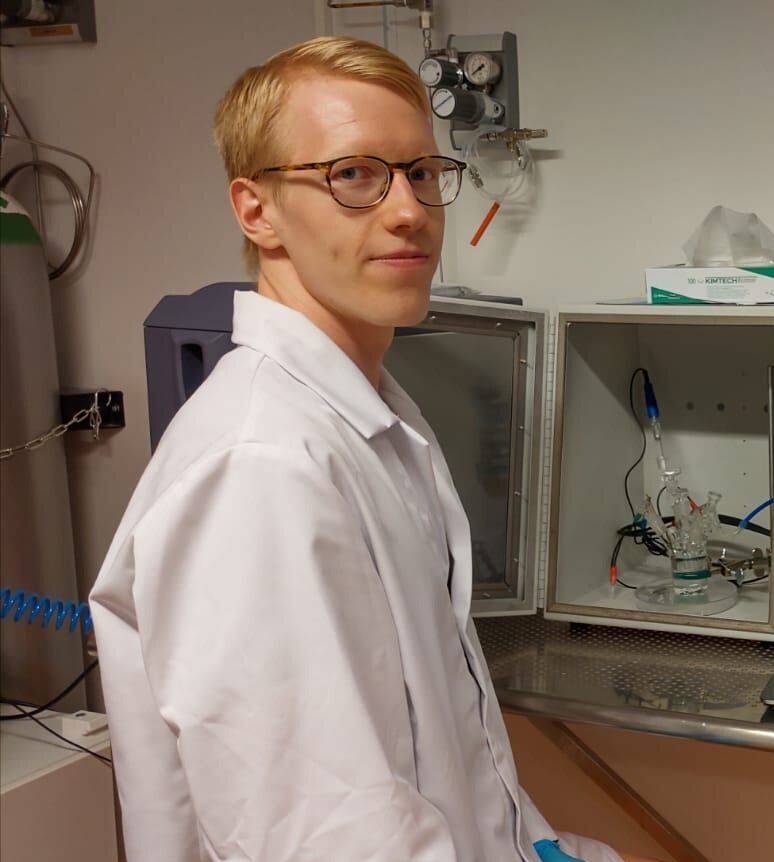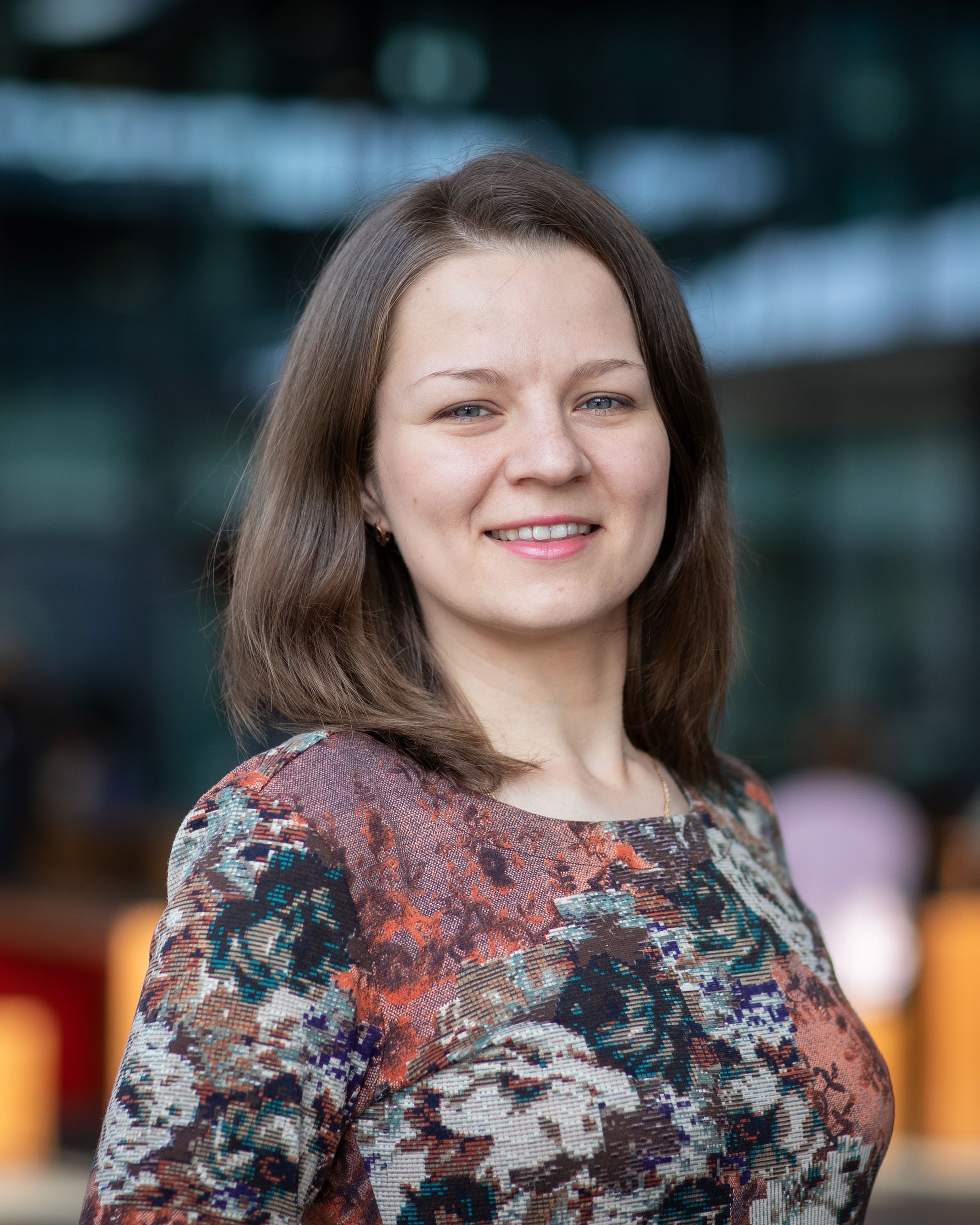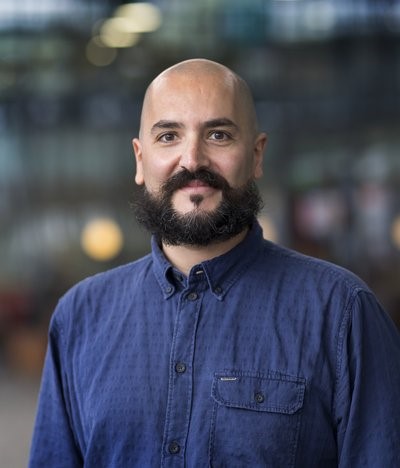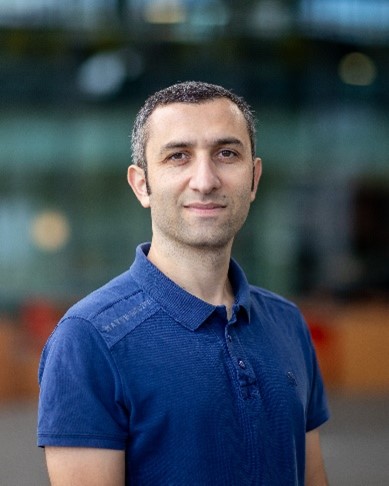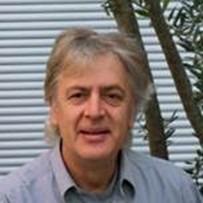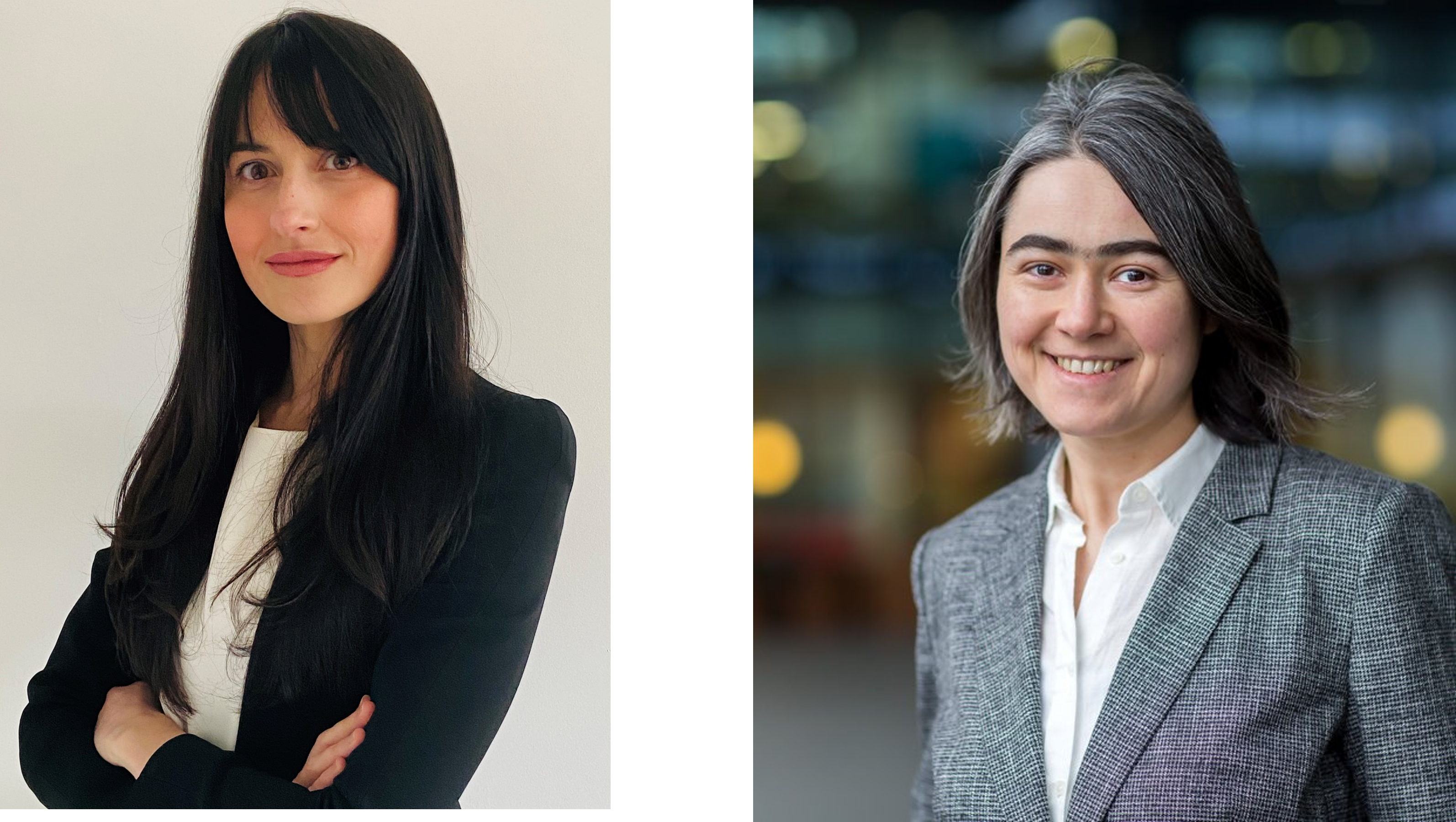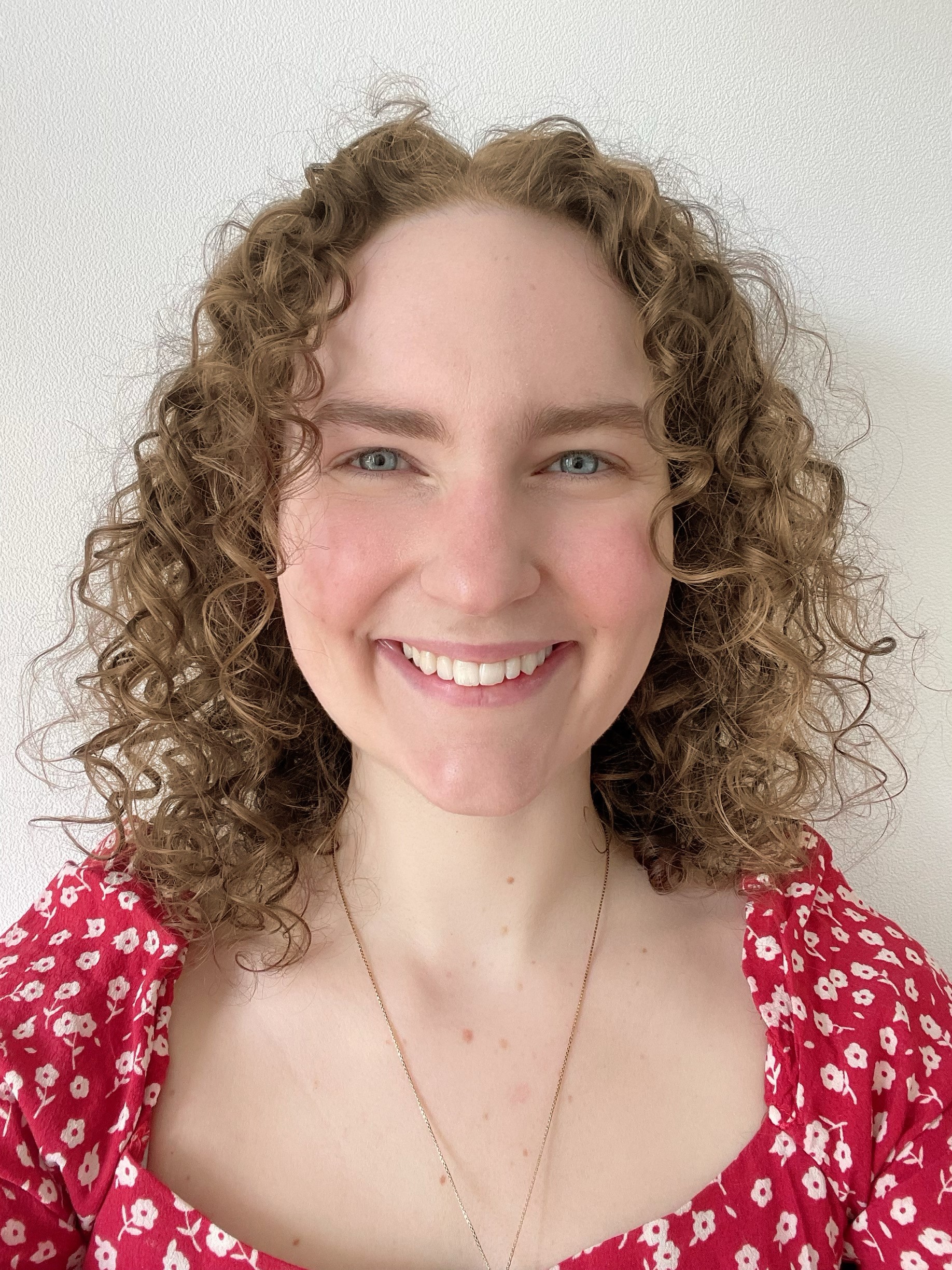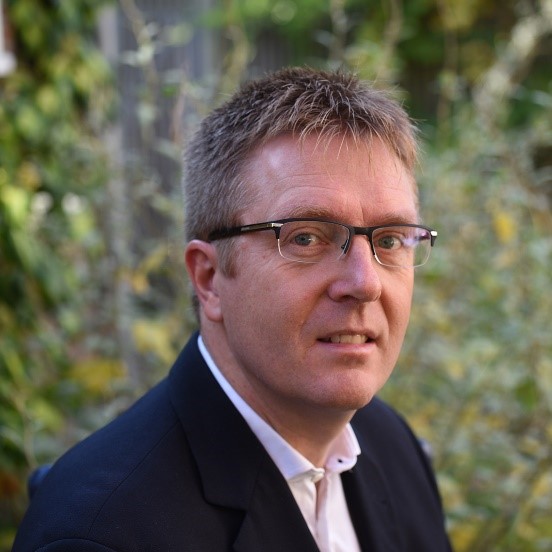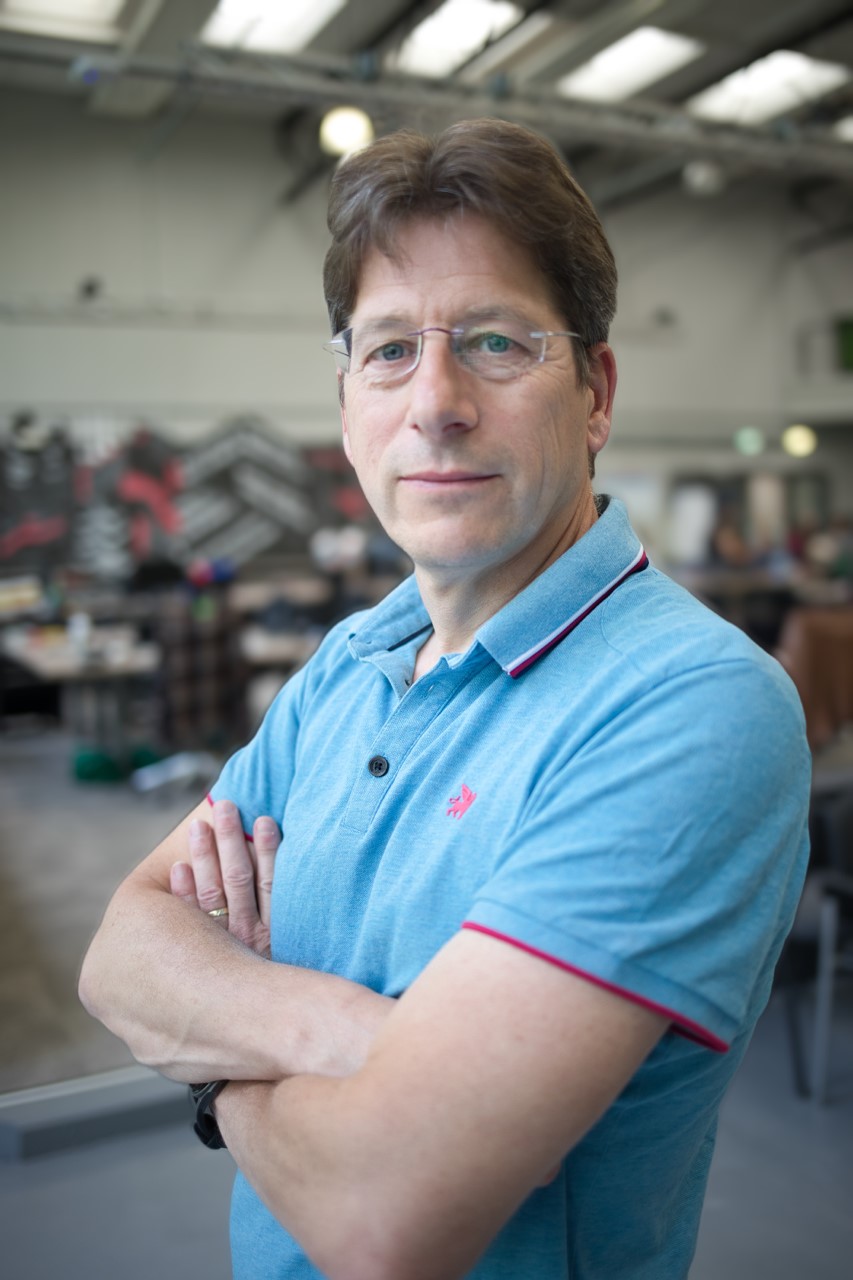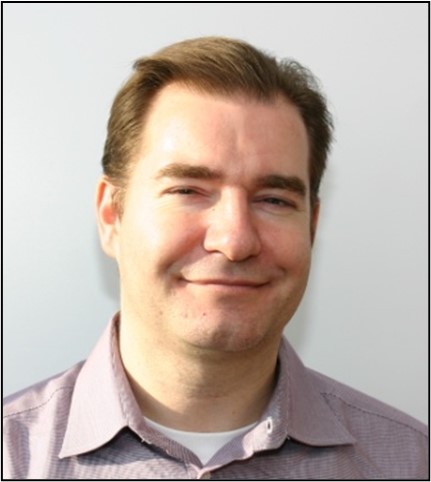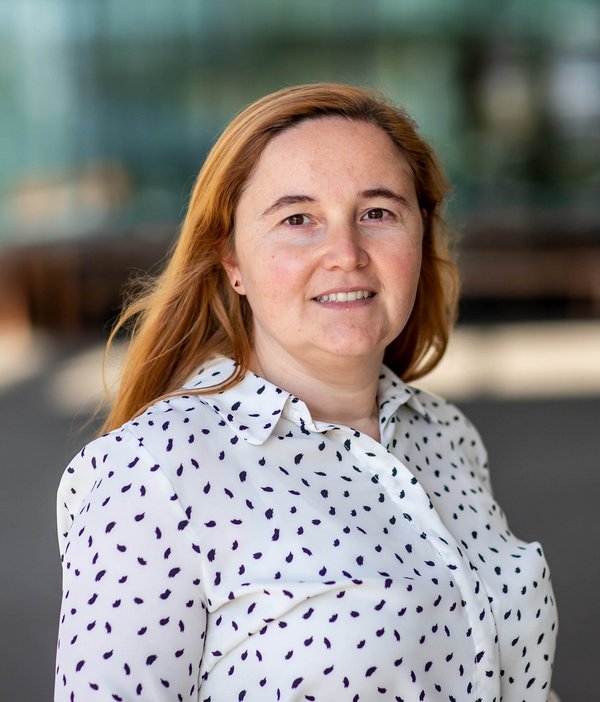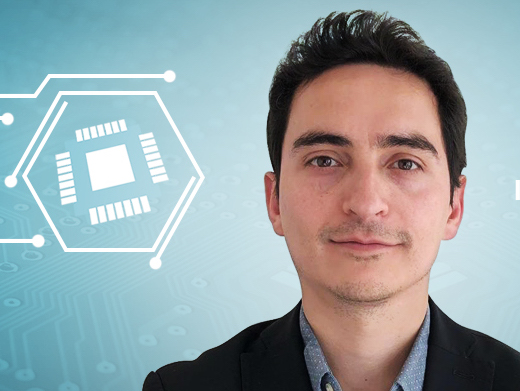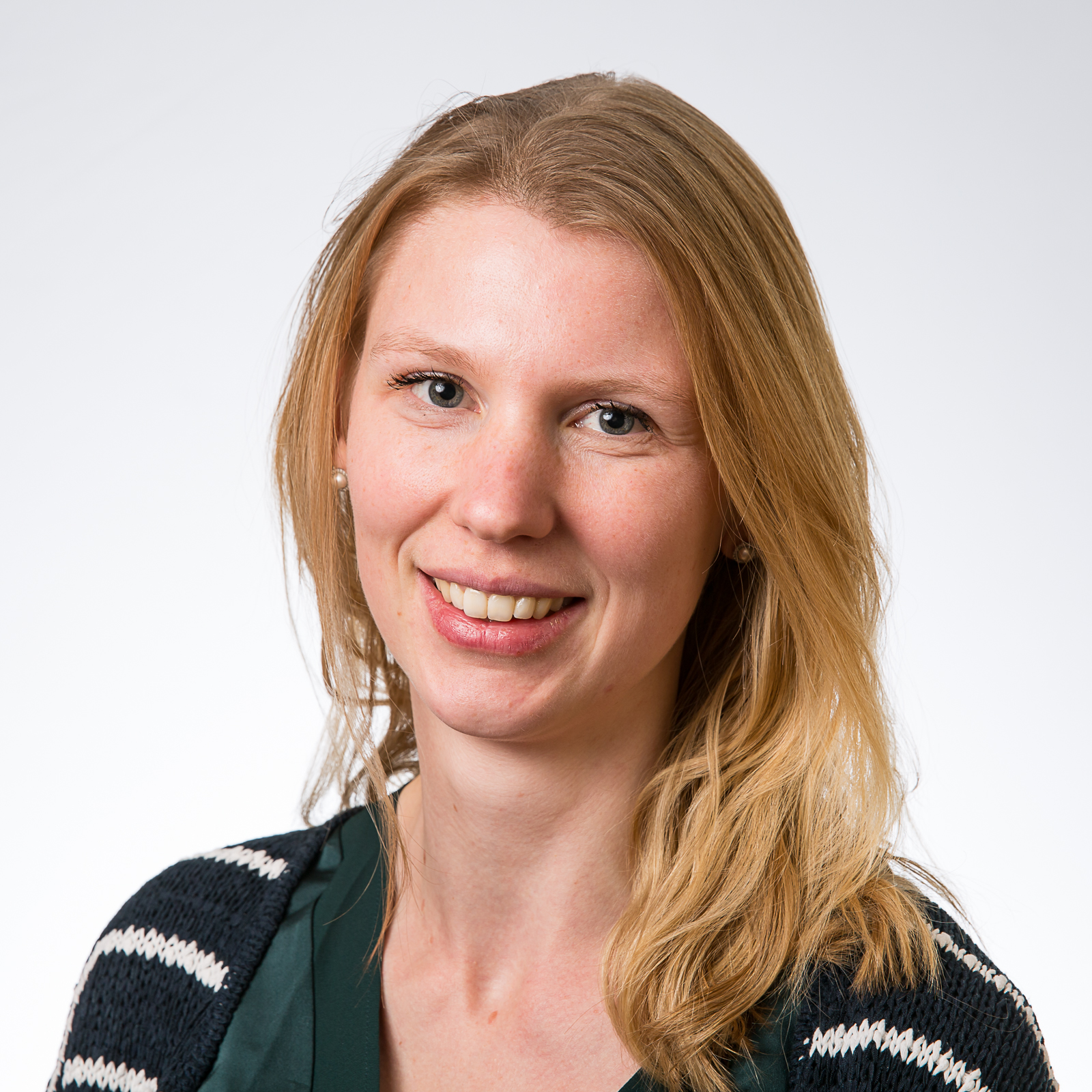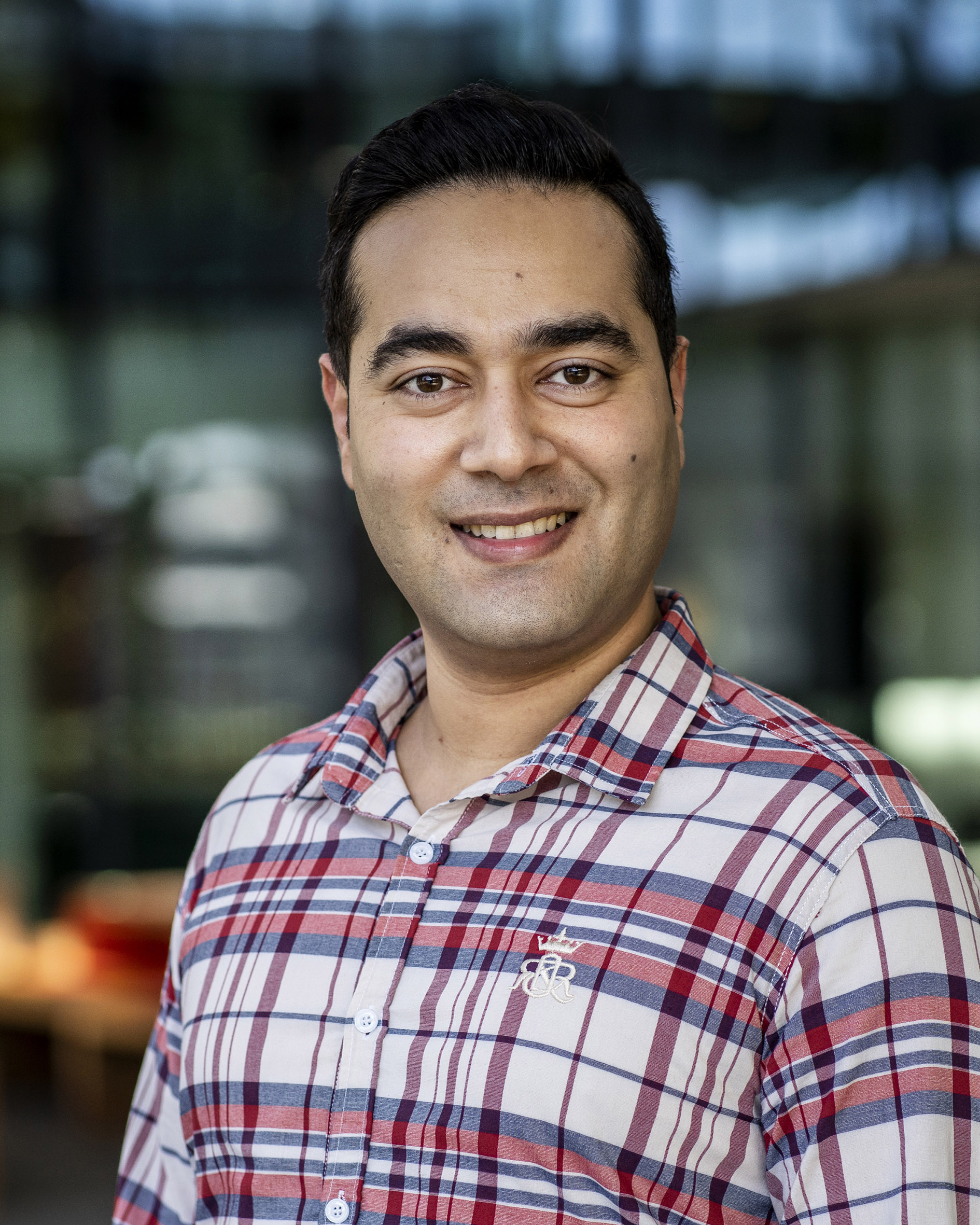Abstracts and biographies
Samuel Rantataro
Title: Carbon nanomaterials for electrochemical detection of neurotransmitters
Abstract:
Our actions and thoughts are governed by neurons and their networks, while their dysfunctioning elicits symptoms in various illnesses. Tapping into the functional/dysfunctional neuronal firing patterns utilizing electrophysiological recordings is the status-quo in the neurosciences. However, the field is slowly adapting to also record neurotransmitter concentrations both at the basal level as well as those arising from transient events. Neurotransmitters are typically released at high-frequency and low concentration, thus limiting the available detection techniques severely. Electrochemical sensors can offer the required sensitivity and temporal resolution, thus being the optimal choice for detecting neurotransmitters. Typical electrode materials and electrochemical techniques have their own limitations that mostly concern selectivity against interfering agents and gradual loss of sensitivity. Correct material selection and experimental design can be used to alleviate and overcome these challenges, which will be discussed in the presentation.
Biography:
Samuel Rantataro is a PhD student in Prof. Tomi Laurila’s group at Aalto University working on the Horizon2020-FETProachtive-CONNECT project (www.fet-proactive-connect.com). He has thorough experience in nano- and microtechnologies, electrochemistry of neurotransmitters and tissue-material interactions, but also fundamental neuroscientific research. He graduated as Master of science with honors (Functional Materials major), his Master thesis was recognized with “The best thesis of the year” award (Aalto University, School of Chemical Engineering), and he is also currently studying to acquire a Master of Neuroscience degree (Helsinki University). Despite having spent only a few years in academia, he has obtained a strong set of skills that are required for successful design and fabrication of integrated organoid-on-a-chip measurement platforms.
Mariia Efremova
Title: Magnetogenetics - can we do better?
Abstract:
Magnetogenetics – manipulation of ion channels via external magnetic field – promises remote and non-invasive stimulation/ inhibition of neurons or other cells with deep tissue penetration. Ideally, one would exploit the exquisite sensitivity of nature's magnetoreceptors for this purpose. Overexpressing of ferritins – the most common Fe-storing proteins in mammalian cells – has been proposed as a genetic biomagnetic handle. However, detailed calculations show that the magnetic properties of ferritin, containing low-magnetized ferrihydrite are orders of magnitude too weak to support the proposed mechanisms.
We have demonstrated that the bacterial analogues of ferritins called encapsulins can be expressed in mammalian HEK293T cells. These encapsulins represent a two-component system of a nanoshell and a natural ferroxidase cargo, enabling the sequestration of up to 60000 iron atoms, which is 10 times more compared to ferritins. We have identified that a small fraction of HEK293T cells grown in a Fe-rich medium and expressing these encapsulins possess ferrimagnetic properties at room temperature. We ascribe this to the intracellular maghemite-like nanoparticles formed inside the encapsulins, and exploit their potential for the “bulk” magnetic cell manipulation. Nevertheless, this task still requires multiple magnetoencapsulins capable of exerting sufficient mechanical forces. Thus, in the second part of my talk I will propose semi-genetic systems based on synthetic antiferromagnetic nanoplatelets for the magnetomechanical manipulation of single ion channels.
Biography:
Mariia Efremova obtained her Ph.D. (2018) in Chemistry and Bionanotechnology at Lomonosov Moscow State University, Russian Federation. In 2019-2021, Mariia was a Humboldt Postdoctoral Research Fellow at the Technical University of Munich, Germany, with a project devoted to the bioengineering of genetically controlled magnetic nanocompartments in living cells. In 2022, Mariia received the EuroTechPostdoc2 Fellowship from the EuroTech Universities Alliance and joined the TU/e as a Marie Skłodowska-Curie Postdoctoral Fellow.
Mariia has authored or co-authored 27 peer-reviewed publications (h-index = 11) and has given oral talks at major international conferences including IV International Baltic Conference on Magnetism: focus on nanobiomedicine and smart materials (IBCM-2021), World Molecular Imaging Congress 2019, and others. She acts as a referee for ACS Applied Materials & Interfaces and Metals. Mariia has been an invited lecturer for the bachelor/ master student courses on the nanochemistry, magnetic nanoparticles and their application in the biomedicine.
Setareh Kazemzadeh
Title: Neuromorphic microdevices
Abstract:
In this talk novel with health-care applications are introduced by means of smart biosensor concepts. The research on neuromorphic devices inspires to contribute to the road towards future adoptive brain implants. This talk will describe the current technological stat-of-the art and the working mechanism of neuromorphic microdevices.
Biography:
Setareh Kazemzadeh, obtained her Masters in solid state physics on the topic of biophotovoltaic solar cells containing Photosystem1 (PS1) complex protein as active layer. The achievement of the highest reported efficiency by then, encouraged her to continue her journey more in the field of multidisciplinary research. Therefore, she joined the neuromorphic engineering group in September 2018. Her PhD focuses on developing neuromorphic (brain-inspired) crossbar arrays
Vito Conte
Title: Supracellular mechanical nature of carcinogenesis
Abstract:
In this talk, I will use an epithelial cell monolayer as a model of carcinoma progression – the normal cells of the monolayer can be conditionally induced to become oncogenic. I will show how the mechanics that develops between the cells of the monolayer with the expression of the disease (supracellular mechanics) can integrate the oncogenic cascade in the individual cells of the monolayer to drive the formation of early malignant tissue morphologies. I will reflect on what opportunities this type of fundamental research can offer to bridge this type of in vitro disease modelling with technology.
Biography:
Vito Conte is a scientist in the engineering and physics of biological systems. He is an assistant professor in Synthetic Morphogenesis at the TU/e Department of Biomedical Engineering. Vito combines in vivo, in vitro and in silico techniques from the fields of biology, physics and engineering to understand how to control tissue shape by controlling cell mechanics in pathological and physiological conditions.
Sertan Sukas
Title: Microfluidic platform for electrical detection of tumor cells
Abstract:
Circulating tumor cells (CTCs) detach from primary tumors, and enter blood stream to spread cancer to other organs, which decreases dramatically the life expectancy of patients. Thus, CTC analysis is of primary importance for early detection and treatment of cancer. CTC detection via blood analysis (liquid biopsy) is faster, easier, and less invasive than conventional “solid” biopsy. However, CTCs are not easy to find: only 1-10 CTCs per mL of blood against billions of normal blood cells. This extreme rarity and the inherent heterogeneity of CTCs necessitate a single-cell analysis strategy. Therefore, a highly selective, efficient and reliable system is needed yet providing high-throughput.
Addressing these challenges, we have developed a microelectrofluidic system that facilitates electrical impedance spectroscopy for detection of tumor cells. I will highlight some of our preliminary results and discuss where we are heading to as a recently established spinoff.
Biography:
Sertan Sukas received his PhD in 2013 in nanotechnology from University of Twente. Since then, he devoted his career for the development of the technology that InnoFluidics now offers. Sertan took several fellowship positions at different research institutes and received several prestigious personal grants. In addition to his academic career, he worked as engineering director for a med-tech spinoff. He is highly motivated in combining his deep research experience with his enthusiasm in entrepreneurship for bringing the technology to the market that he has been working for its development for almost a decade. He is founder and CEO at InnoFluidics.
Wiebe Kruijer
Title: Novel pathways activating remyelinisation in multiple sclerosis
Abstract:
Multiple Sclerosis (MS) is a progressive autoimmune disease with unknown etiology, affecting worldwide more the 2,5 million people. It is characterized by the appearance of characteristic brain and spinal cord lesions that represent sites of immune attack on myelin, the isolating material that is wrapped around nerve axons and whose integrity is absolutely essential for proper nerve signal conduction. Depending on the site and size of the lesions, a large variety of disturbances including motor, sensory, cognitive and visual symptoms are experienced, eventually leading to severe disability. With an average age of first diagnosis of this disease of around 25, both patient burden and socio-economical impact are enormous.
All medication currently available to treat MS is aimed at modulating the autoimmune attack on myelin, thereby limiting nerve cell damage and decreasing disability progression. However, even with the most effective immune suppressive therapy, neuronal cells are not protected from further neural damage. Therefore, there is an unmet need for MS medication that is targeted at repair of the nerve cell damage, thereby effectively blocking further disease progression.
In this presentation our strategy aimed at activating remyelination in MS lesions, that is based on the identification and use of MS risk genes, will be discussed.
Biography:
Wiebe Kruijer is currently Scientific Advisor at Drug Target ID. Being a professor for many years in Molecular Cell Biology and Development Genetics in University of Twente and University of Groningen respectively, he started out his career as an investigator at the Hubrecht Laboratory. Initially working on cancer starting out as a post-doc at the Salk Institute San Diego (USA) in 1983-1985 today his research focus has been for many years on the application of stem cell technology for neurodegenerative diseases, specifically on multiple sclerosis. He published more than 100 research articles and continues to work in his field of genetics and stem cells as an independent scientists and advisers to start-ups.
Francesca Manni & Sveta Zinger
Title: Artificial intelligence for hyperspectral imaging: revealing the invisible anatomical features during image-guided surgeries
Abstract:
In various applications based on surgery, navigation systems allow image-guided interventions facilitating minimally invasive surgery (MIS), which aims to reduce tissue trauma, blood loss and patient recovery time. In neurosurgery, comparing free-hand techniques which rely solely on the expertise of the surgeon with MIS, the latter offers a safer surgery and a reduction of damaging vascular structures. Two aspects should be considered for providing interventional imaging and surgical navigation in neurosurgery: (1) accurate patient tracking to compensate for patient movements (e.g. during spinal fixation surgeries) and (2) enhanced vision to give assistance and actual information about the internal anatomy (e.g. tumor margins identification for oncological tissue resection). The problem of neurosurgical guidance with imaging techniques are twofold. For patient positioning, accuracy relies on continuous tracking of the patient, without loss throughout the whole procedure. If positioning is done with markers or dynamic reference frames (DRF), both markers and frames can be dislodged or obscured during the surgical procedure, resulting in loss of navigational feedback and accuracy. In addition and for cases with internal navigation for oncology neurosurgery, surgical navigation is crucial for tissue characterization. During brain tumor resection, the success of a surgical tumor removal relies on the detection of malignant tumor boundaries. This research concentrates on improving the surgical guidance for the two medical use cases: (1) accurate spinal surgery using optical and HS imaging, (2) brain tumor identification with HSI for advancing surgical oncology. We investigate two techniques to provide better tracking and/or visual assistance for neurosurgery. First, hyperspectral imaging (HSI) is exploited for patient localization in spinal surgery. Second, hyperspectral tissue characterization is studied for improving guidance during tissue resection in neurosurgical oncology. The contributions of this research offer novel solutions for replacing marker-based approaches for markerless tracking by using optical and HSI modalities. We demonstrate the potential of HSI for brain tumor classification, providing an intra-operative feedback to the surgeon for objective assessment of cancer. Results show that HSI can form an important technique for surgical guidance in complex interventions to improve the surgical outcome.
Biography Francesca Manni:
Francesca Manni is AI scientist at the Department of AI Data Science and Digital Twin at Philips Research and Lead of the Healthcare group at the Big Data Value Association (BDVA). Francesca is PhD candidate at VCA Research Lab (Signal processing System group), Department of Electrical Engineering at the Eindhoven University of Technology. She has received her MSc. Degree in Medical Engineering from University of Rome “Tor Vergata”. Her PhD research includes AI for hyperspectral image analysis during surgical navigation and intraoperative cancer detection. Currently, she is part of the AI4Vision Team at Philips Research.
Biography Sveta Zinger:
Sveta Zinger received her MSc in computer science in 2000 from the Radiophysics faculty of the Dnepropetrovsk State University, Ukraine. In 2004, she received a PhD from the Ecole Nationale Superieure des Telecommunications Paris, France, for her thesis on interpolation and resampling of 3D data. Sveta held several postdoc positions in France and the Netherlands in the area of digital image understanding and content based image retrieval. Currently Sveta is an Associate Professor in the Eindhoven University of Technology. Her research concerns digital image analysis in healthcare. Sveta published 180 papers in her research domain. In 2020 she co-established a new Elsevier journal “Computer Methods and Programs in Biomedicine Update” in which she is currently an co-editor-in-chief.
Elisabetta Michielon
Title: Development of an in vitro 3D skin-on-chip model for melanoma modelling and immune cell trafficking
Abstract:
In the past decade, several advances have been made in the development and generation of in vitro healthy and diseased human skin models. However, most of these models are cultured under static conditions, therefore lacking the dynamic medium perfusion which would enable a more physiological transport of nutrients and a more accurate representation of human (patho)physiology. Here, we developed a physiologically representative in vitro three-dimensional healthy reconstructed human skin (RhS) and melanoma (Mel-RhS) model, showing features of invasive melanoma, and confirmed their viability in a microfluidic device up to 3 days by means of a lactate dehydrogenase (LDH) and MTT assay. Moreover, we demonstrated the ability of NK cells to flow within the different compartments of the device, suggesting the potential of the microfluidic system to mimic immune cell trafficking and to further advance the Mel-RhS in the setting of an immune-competent model for preclinical testing of cell-based therapeutics.
Biography:
Elisabetta is a PhD student under the supervision of Prof. Dr. Sue Gibbs and Prof. Dr. Tanja de Gruijl in the department of Molecular Cell Biology and Immunology at the Amsterdam University Medical Centre. Here, her group aims to develop the next generation immune competent human skin models which closely represent healthy and diseased skin, thus providing a platform for safety and efficacy testing of drugs and consumer products which come into contact with our skin. Elisabetta’s PhD project is part of the EuroStars program (Project Number 2005392; IMAGINe) and focusses on the development of a tissue-engineered in vitro organotypic three-dimensional metastatic melanoma-in-skin model to study disease progression and in situ tumor-induced immune suppression. The incorporation of immune cells into the model and its further integration into a microfluidic device will provide a valuable tool for the testing of immunotherapies in a relevant human setting.
Albert van Breemen
Title: Flat panel display technology as the enabler for organ-on-chip commercialization
Abstract:
The European Organ on Chip (OoC) roadmap has highlighted the need for cost-effective and scalable fabrication technologies of OoC and smart multiwell plates (SMWP). TNO at Holst Centre proposes the use of Flat Panel Display (FPD) technology as a cost-effective and viable route for mass-manufacturing of OoC platforms. Here, we demonstrate its use as a first step toward OoC commercialization.
In collaboration with Eindhoven University of Technology, we have realized polymer-based microsieve electrode arrays (µSEAs) by expanding our FPD compatible technology. A proof of principle is provided for both the biocompatibility and the ability to measure cell activity with the integrated electrodes.
Biography:
Albert van Breemen started his career as an organic and polymer chemist, focusing on the synthesis and characterization of novel semiconductors for organic light emitting diodes. The expertise gained during this PhD research has been broadened toward large area processing of electrical functional molecules and polymers and its use in a variety of flexible electronics prototypes. His current research interests include advanced functional materials and their use in image sensors and high energy radiation detectors for medical applications, as well as in smart multi-well plate technology for life science applications.
John Bell
Title: Venture Building: The step from technology to business
Abstract:
HighTechXL is the Netherlands’ only deep-tech venture builder. Based at High Tech Campus Eindhoven, HighTechXL mobilizes the region’s unique skills and networks by combining deep tech with entrepreneurship. HTXL scouts advanced technologies from world-renowned R&D centers and tech companies, builds high-performance teams around the technologies and guides the teams through a rigorous, nine-month venture building program. At the end of the program, deep-tech ventures have all the building blocks to become fast-growing companies. HighTechXL is focused on building startups who will tackle grand societal challenges society faces today, and startups must adhere to one or more of the United Nations Sustainable Development Goals.
Biography:
John Bell is CEO of HighTechXL, the Netherlands’ only deep-tech venture builder, based at High Tech Campus Eindhoven. Before joining HighTechXL, John spent five years at Johnson & Johnson in the U.S. as Vice President, External Innovation & new Business Models. There he led the External Innovation Department and worked closely with entrepreneurs, strategic suppliers and partner companies to co-create game-changing innovations. He also led J&J’s internal accelerator. Prior to J&J, John was VP of Strategy and New Business Development at Philips Research, where he was responsible for open innovation, partnerships with tech institutes and collaboration with startups, including HighTechXL startups. In these roles, John gained extensive experience in open innovation, new business creation, partnerships and strategy. John has a PhD in Business Economics from Tilburg University and is part-time professor of Alliance Strategy. John is a native Dutch speaker and is fluent in English, French and German.
Hugo Sondermeijer
Title: TBA
Abstract:
Seaweed-derived alginate (SDA) is a highly versatile biomaterial. We developed methods to purify and modify SDA in order to produce immunocompetent primed porous 3D scaffolds and hydrogels, which allowed for the generation of vascular beds and transplantation of mammalian (stem) cells, which could successfully treat heart failure following acute heart attacks, and cure diabetes mellitus, in experimental animal models. In addition, SDA and its by-products are very useful in pharmaceutical, food, and other industries, while cultivating seaweed sequesters CO2 from the Earth’s atmosphere. We plan to upscale production of SDA, while investigating novel medical and non-medical applications of SDA.
Biography:
My name is Hugo Sondermeijer and I was born in Leiderdorp, the Netherlands, in 1975. Before founding AlgaeMed Industries in the Netherlands in 2020, I studied medicine and biomedical sciences in Leiden, the Netherlands. Subsequently, I worked for over 15 years as a translational scientist, medical doctor, and pharmaceutical physician, on several different continents. I became inspired by biotechnology entrepreneurship during my PhD and postdoctoral studies in bioengineering and transplant immunology at Columbia University Medical Center and Massachusetts General Hospital in the USA, where I invented a primed seaweed-derived biomaterial scaffold for (stem) cell transplantation, among other applications. My future ambition is to expand AlgaeMed Industries into a large scale biomaterial production hub. When not working, I enjoy gastronomic cooking, mountain biking, and planning for the next adventure with my wife and son.
Annelies Bobelyn
Title: Technology commercialization: dealing with demand and supply side uncertainty
Abstract:
Overall, the healthcare industry is facing radical changes, which are primarily driven by technological developments such as artificial intelligence (AI), virtual/augmented reality (VR/AR), biosensors, robotics, and digital health solutions, all offering new opportunities to better respond to global health challenges. These disruptive technologies not only change what to compete on (i.e., the performance attributes of the technology) but also whom to compete for. Consequently, healthcare innovators deal with a lot of uncertainty regarding the demand side of their technology. To address this uncertainty in the market collaborative approaches are required including co-creation and experimentation. Yet, in a highly regulated environment, experimentation with various healthcare solutions is more complex. Further adding to the complexity is the uncertainty regarding what stakeholders to involve. As long as the nature of the desired solution is unclear, there is also uncertainty about which stakeholders to involve to provide the necessary complementary assets in terms of technology sourcing, distribution, etc. Finding ways to reduce uncertainty both at the demand and supply side is thus crucial to move innovation forward. Throughout the various sessions, several tools will be discussed to navigate through an uncertain landscape.
Biography:
Annelies Bobelyn is an Assistant Professor in the department of Industrial Engineering & Innovation Sciences at Eindhoven University of Technology (TU/e) where she studies the phenomenon of technology-driven entrepreneurship. Her research focuses on the strategic management of young technology-based firms and in particular how they make strategic decisions regarding product-market fit and business model organization. She has a strong interest in high-tech starters in the healthcare domain and aims to contribute to the Humans & Technology growth theme of the department IE&IS. She has published her research in journals such as Research Policy, Journal of Small Business Management and Organization Studies. Part of her research has been funded by an ICM Doctoral Fellowship (2008), an EU-FP7 Marie Curie Post-doctoral Fellowship (2013) and an Interreg Project (EMR-097) on fostering student Entrepreneurship.
Annelies Bobelyn completed her dissertation at the University of Ghent and was also visiting PhD student at Imperial College London Business School. Her dissertation examined acquisitions of young technology-based firms from the perspective of the target firm aiming to realize a successful exit. Prior to joining the TU/e, she was a post-doc researcher and Marie Curie Fellow at the Rotterdam School of Management, Technology and Operations Management department.
Hugo Perez
Title: In-situ Liquid Phase Transmission Electron Microscopy: A Revolutionary Technique for Life Science Applications
Abstract:
We introduce our technology for in-situ Liquid Phase Transmission Electron Microscopy (LPTEM): a plug-and-play system, referred to as the "Stream system", that uses a microfluidic Lab-on-a-Chip device, with integrated nano-sensors/actuators, as a smart sample carrier. With "Stream", you can observe biological processes (under sub-nanometer resolution) as they truly occur in time and as function of different stimuli, while keeping your bio-sample in its native liquid environment. Similarly, for pharmaceutical research, you can control the biochemistry on-the-fly and influence the kinetics of a biochemical reaction. The system enables high-throughput studies and the possibility to re-collect the sample for downstream biochemical analysis.
Biography:
Dr. Hugo Pérez serves as the Chief Executive Officer at DENSsolutions. He has prior experience as Chief Technology Officer (CTO), Product Architect, Product Manager and Microsystems Engineer. His core expertise is on MEMS development for various applications, ranging from Life Sciences to Chemistry and Semiconductors. He holds a PhD degree in Nanoengineering, MSc in Molecular Bioengineering, MSc in Nanotechnology and an MBA. During his career, Dr. Pérez has been recognized in multiple international conferences with the best scientific paper/presentation award: 2012 (China), 2014 (The Netherlands), 2016 (Japan) and 2019 (Argentina). In two consecutive years (2020 and 2021) he brought, together with his team, the Microscopy Today Innovation Award from the Microscopy Society of America for the development of an in-situ system for Liquid and Gas Phase Electron Microscopy. In April of last year, Dr. Pérez Garza was included by the business magazine "Expansion" as one of the 30 promising businessmen of 2021. This year, the British magazine of "Business Worldwide" has nominated him as one of the top 3 most innovative CEOs in the Nanotechnology Industry.
Wieke Haakma
Title: Route to impact
Abstract:
The Dutch Research Council (NWO) funds top researchers, steers the course of Dutch science by means of research programs and by managing the national knowledge infrastructure. When it comes to funding opportunities offered by NWO, we follow next to evaluating the scientific rigor of a research proposal in a peer review process also an assessment of the societal impact. Overall, it is the position of the Dutch funding landscape that by working together within knowledge utilization strategies, the impact of research on society can be largely expanded.
In this presentation, we wish to generate awareness for the impact plan approach and inform you on the cornerstones of how to make impact with your research. More information on these workshops can be found online.
Biography:
Wieke Haakma works as a program officer at the Dutch Research Council (NWO) for the department of MedTech & Health. Before joining NWO, she studied Technical Medicine and Health Sciences at the University of Twente after which she did her PhD’s at Aarhus University in the department of Forensic Medicine and at the radiology department of the University Medical Center of Utrecht. In her current position at NWO she is involved in different valorization instruments such as the Faculty of Impact which is a two year program which gives talented fellows the opportunity to combine entrepreneurship with science. She is also coordinator of the Venture Challenge, a program to provide starting entrepreneurs in the life sciences with professional support during the development of their business case. She is passionate about contributing to an efficient and effective innovation chain and to stimulate the process in which technology is brought to the market so that it can lead to impact for society.
Rahman Sabahi Kaviani
Title: Nervous system tissue models made easy: Microfabrication for an on-chip approach
Abstract:
We present microfluidic component design and fabrication processes for an on-chip approach in studying the human nervous system. Several in vitro culture studies have demonstrated the importance of mechanical properties such as stiffness and curvature in the design of the culture microenvironment. The design of a proper 3D microenvironment enhances cell adherence and survival thanks to maintaining the cells’ and tissues’ natural 3D morphology. Different chip fabrication processes and replication materials, like polydimethylsiloxane (PDMS) and Norland Optical Adhesive 81 (NOA81), are discussed to make microtunnel devices, microsieves and nanogrooved substrates by replica molding, respectively. In more detail, soft-lithography and specifically microtransfer molding are discussed for their flexibility and simplicity in parameter change and material’s selection. Resulting chip platforms host cells in a three-dimensional (3D) microfluidic gasket and allow stem cell-derived cultures to form connected organoids with nervous system cell identity. In conclusion, polymer-based micromachining allows for a rapid prototyping approach to explore design features in Nervous system on chips.
Biography:
Rahman has obtained his B.Sc. degree in Mechanical Engineering from Sharif University of Technology, Iran, where he graduated in the top 5% of his class. Later, he received his M.Sc. degree in Mechanical Engineering from the University of Michigan, Ann Arbor, MI, USA, where he was nominated for the prestigious Rackham Fellowship award. He then continued his research in BioMEMS laboratory in the University of Michigan and Lurie Nanofabrication Facility, where he gained further knowledge and hands-on experiences in design and fabrication of microfluidic devices and microsystems. Prior to joining Eindhoven University of Technology for his PhD studies, he gained further R&D and teaching experience in General Motors company, Iran’s National Elite Foundation and Sharif University of Technology.
7th International Workshop on Healthcare, Life-Sciences, and Entrepreneurship
 Registration website for 7th International Workshop on Healthcare, Life-Sciences, and Entrepreneurship
Registration website for 7th International Workshop on Healthcare, Life-Sciences, and Entrepreneurship 7th International Workshop on Healthcare, Life-Sciences, and Entrepreneurship noreply@mailing.tue.nl
7th International Workshop on Healthcare, Life-Sciences, and Entrepreneurship noreply@mailing.tue.nlhttps://www.hlse.nl
2022-06-19
2022-06-22
OfflineEventAttendanceMode
EventScheduled
7th International Workshop on Healthcare, Life-Sciences, and Entrepreneurship 7th International Workshop on Healthcare, Life-Sciences, and Entrepreneurship 0.00EUROnlineOnly2019-01-01T00:00:00Z
To be announcedTo be announced
